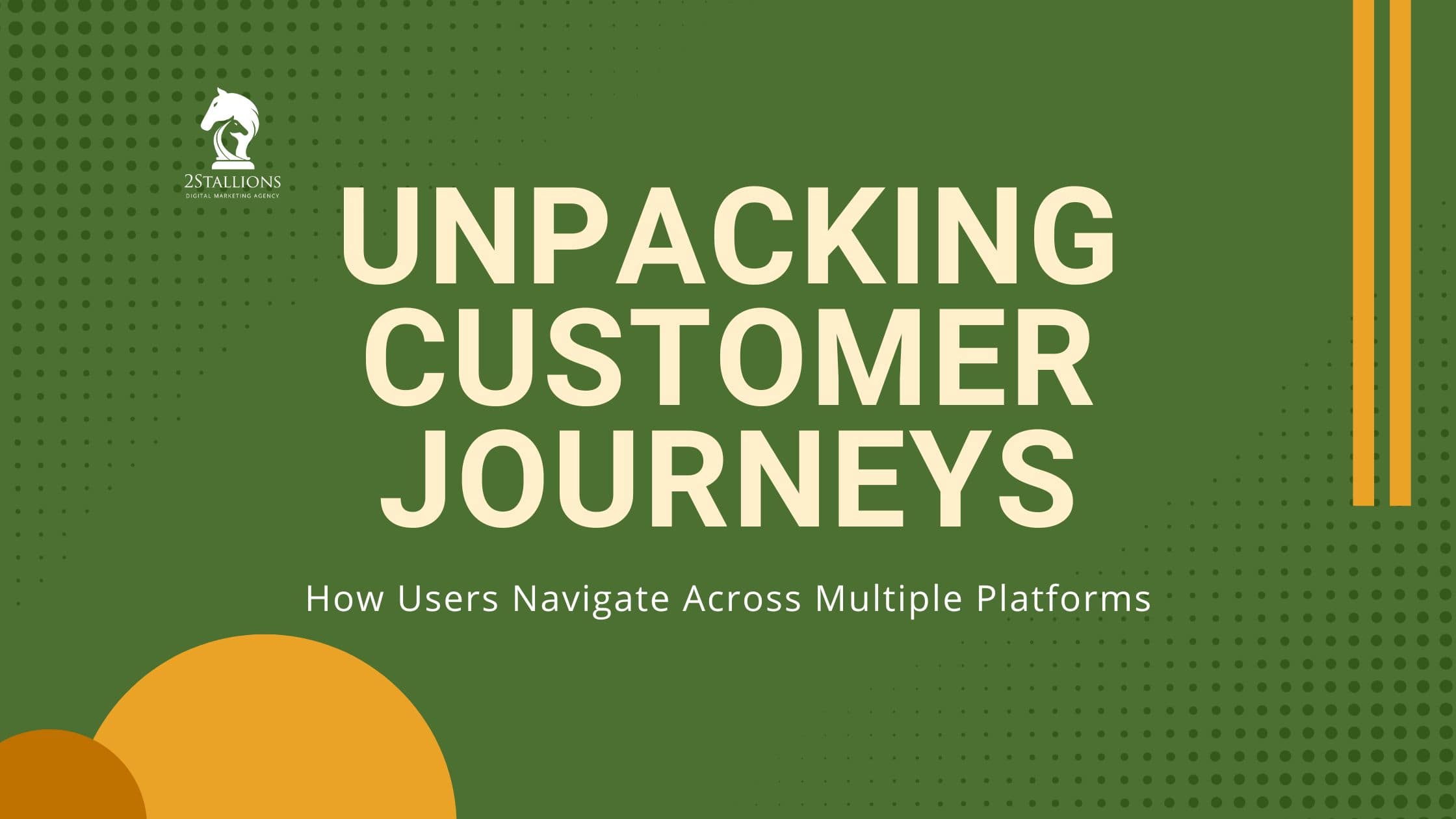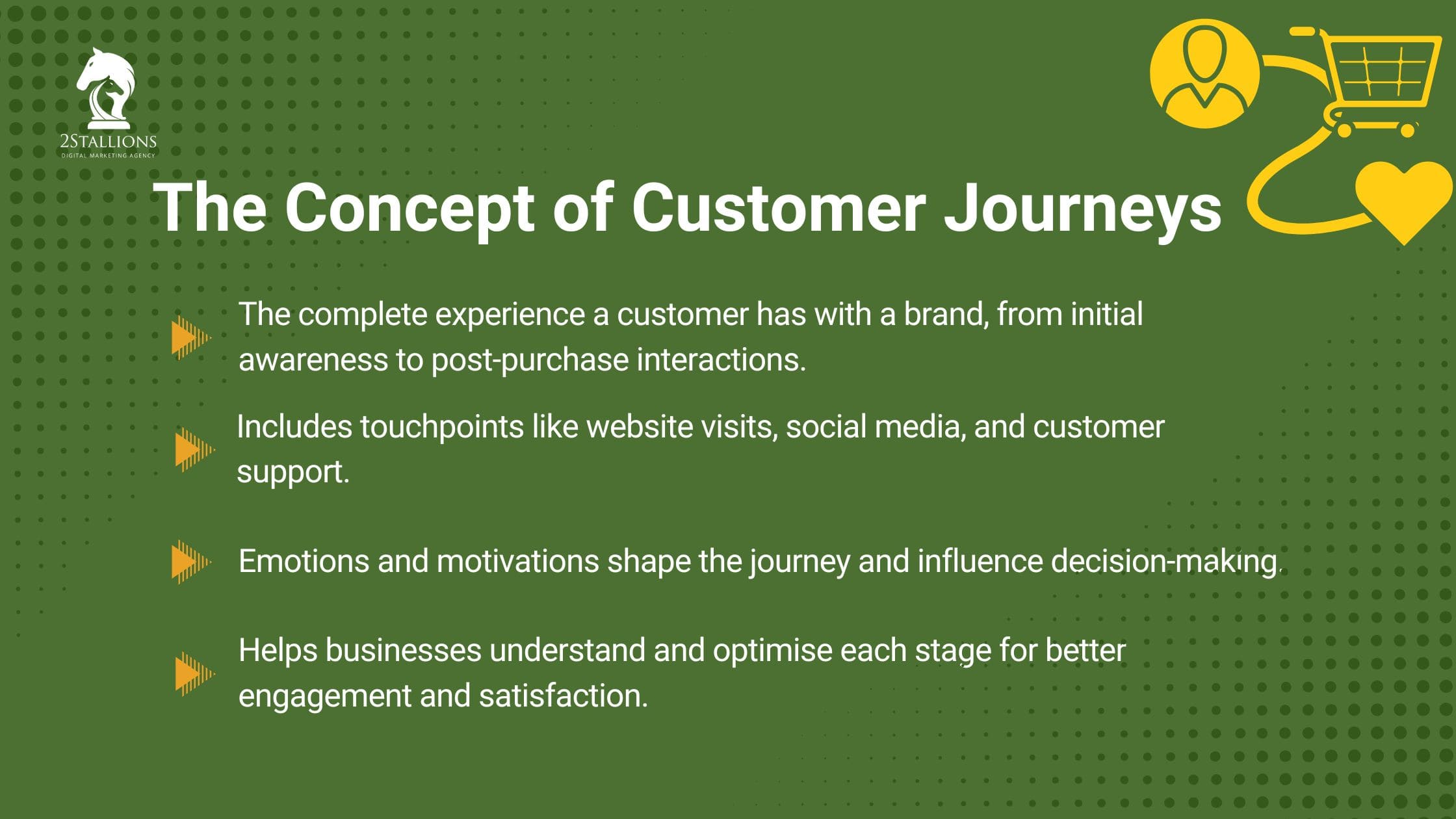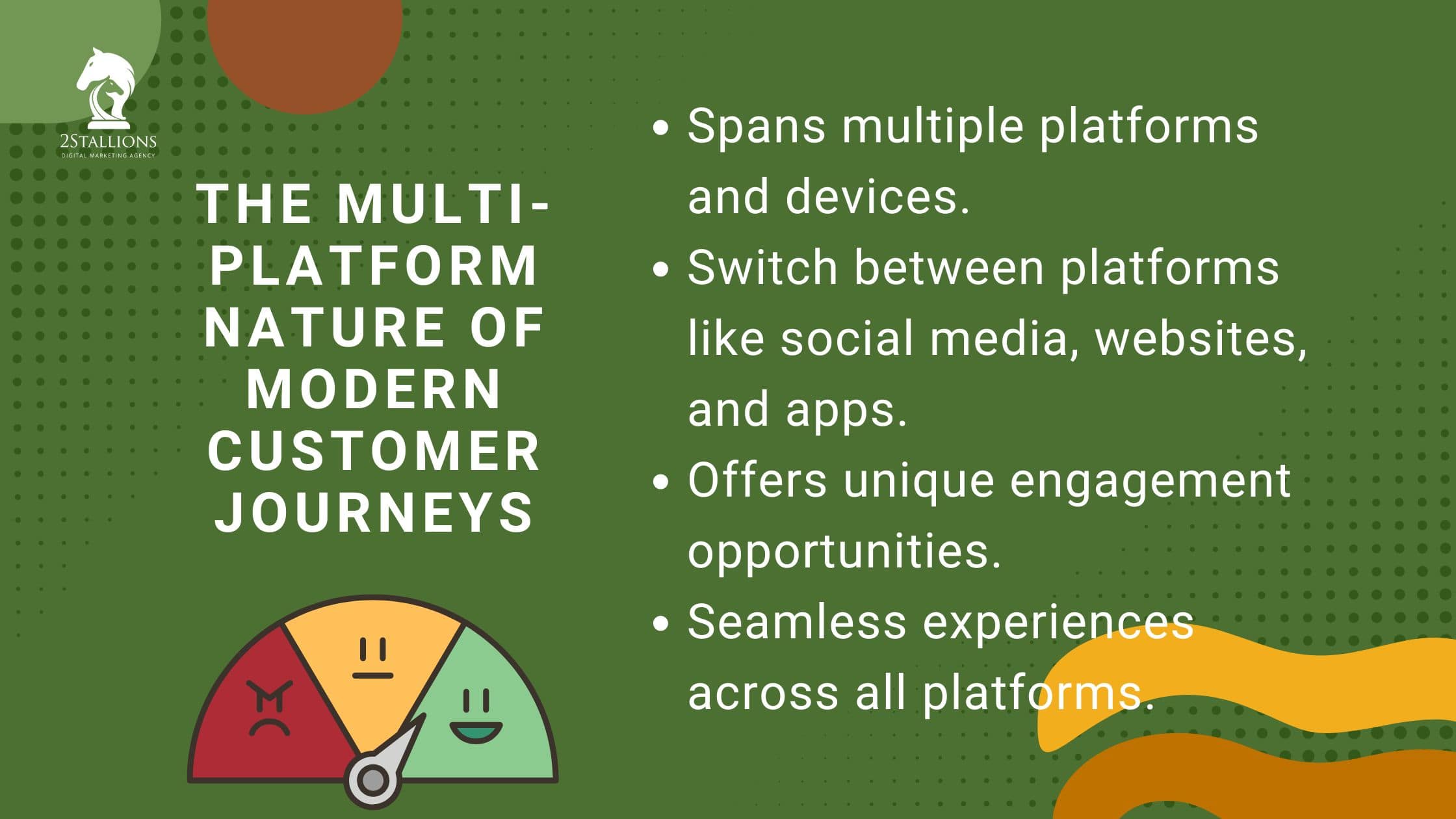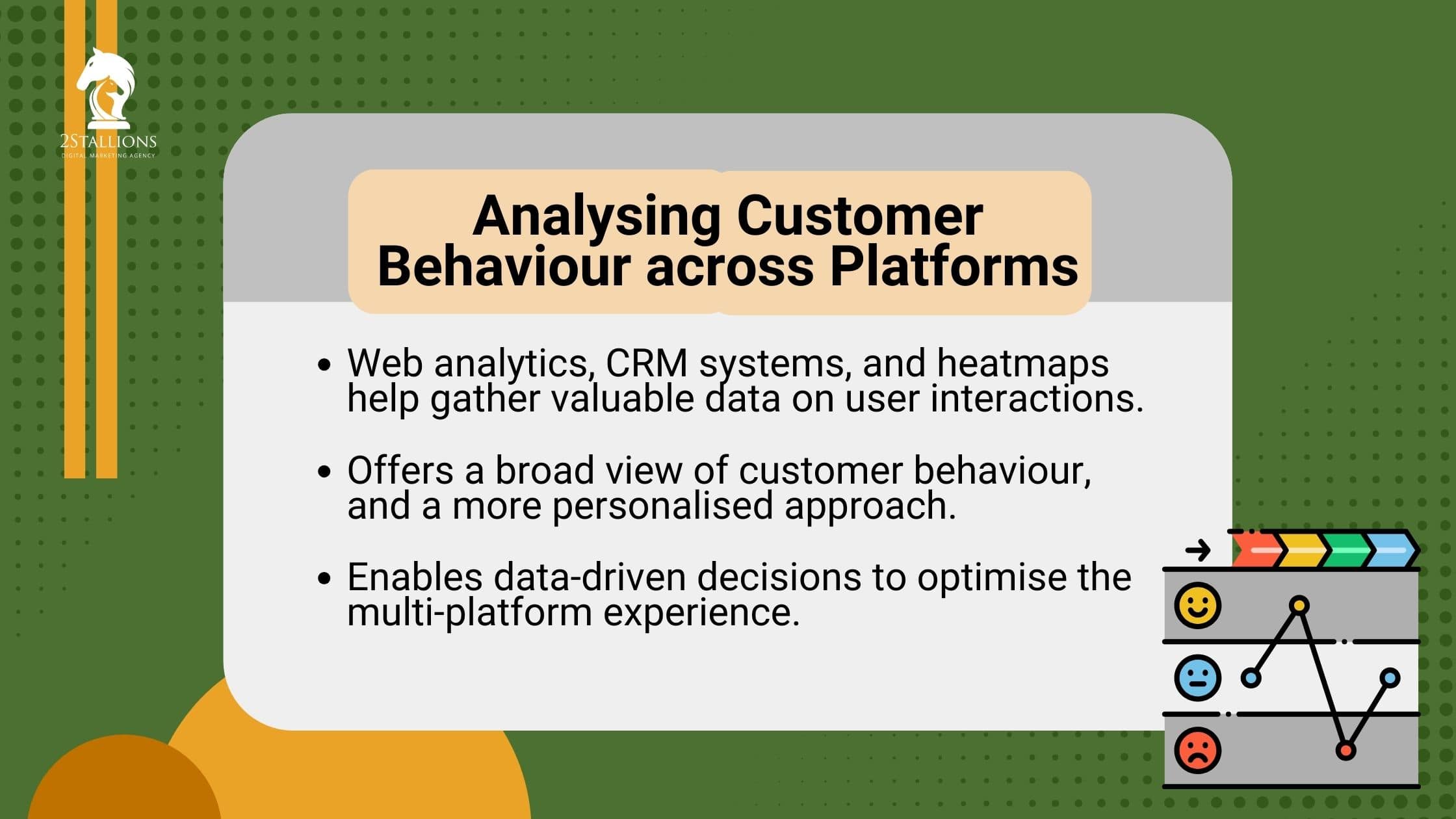Content
SHARE

In today’s digital landscape, it has become increasingly important for businesses to understand and cater to the needs of their customers across multiple platforms. Customer journeys encompass the various touchpoints a user goes through when interacting with a brand, and have evolved to span multiple devices and channels. This article aims to explore the concept of customer journeys, shed light on the multi-platform nature of modern customer journeys, discuss strategies for analysing customer behaviour across platforms, and provide insights into optimising the multi-platform customer journey. Additionally, we will delve into future trends surrounding multi-platform customer journeys and the impact of emerging technologies on this ever-evolving landscape.
Understanding the Concept of Customer Journeys
Customer journeys refer to the entire end-to-end experience a user has when engaging with a brand. It involves a series of touchpoints, from initial awareness to post-purchase interactions. Customer journey mapping plays a crucial role in better understanding and visualising these touchpoints, allowing businesses to identify pain points and opportunities for improvement.
Embarking on a customer journey is akin to setting sail on a voyage of discovery, where each touchpoint encountered is a port of call on the vast ocean of consumer experiences. As customers navigate through the intricate web of interactions with a brand, they form perceptions, make decisions, and ultimately shape their loyalty based on the quality of their journey.
The Importance of Customer Journey Mapping
Customer journey mapping provides a holistic view of their customers’ experiences. By mapping out the various stages a user goes through, including awareness, consideration, purchase, and loyalty, businesses can gain valuable insights into where and how to engage with customers effectively.
Delving deeper into customer journey mapping unveils a treasure trove of insights waiting to be discovered. By meticulously charting the course of a customer’s interactions, businesses can uncover hidden gems of information that can guide them towards creating tailored experiences that resonate with their audience on a profound level.
Key Components of a Customer Journey
A customer journey consists of several key components. These include touchpoints like website visits, social media interactions, and customer support channels. Furthermore, emotions and motivations also play a vital role in shaping the customer journey, as they can significantly influence a customer’s decision-making process.
Peering through the looking glass of customer touchpoints reveals a kaleidoscope of interactions that form the tapestry of a customer’s journey. From the initial spark of awareness to the flame of loyalty, each touchpoint weaves a unique thread in the fabric of the customer experience, shaping perceptions and forging connections beyond the transactional realm.
The Multi-Platform Nature of Modern Customer Journeys
In today’s digital age, customer journeys have become inherently multi-platform, involving interactions across various devices and channels. Understanding the role of different platforms in the customer journey and how customers switch between these platforms is essential for businesses aiming to provide a seamless and cohesive user experience.
With the rise of smartphones and tablets, customers now have access to various platforms at their fingertips. From browsing social media on a mobile phone to online purchases on a laptop, the modern consumer seamlessly navigates between different devices throughout their purchasing journey. This shift in consumer behaviour has prompted businesses to adapt their marketing strategies to cater to this multi-platform landscape.
The Role of Different Platforms in Customer Journeys
Customers interact with brands across a multitude of platforms, including websites, mobile apps, social media channels, and offline touchpoints. Each platform serves a specific purpose and offers unique opportunities for engagement. Businesses must optimise each platform to maximise customer satisfaction and drive conversions.
Social media platforms, for instance, provide businesses with a direct line of communication to engage with customers in real-time. By leveraging interactive features such as polls, live videos, and stories, brands can create a more personalised and immersive experience for their audience. On the other hand, websites serve as a hub for detailed product information, customer reviews, and e-commerce transactions, offering a convenient platform for customers to research and make informed purchase decisions.
How Customers Switch Between Platforms
Customers often switch between platforms throughout their journey. For example, a customer may browse products on a brand’s website, add items to their cart on their mobile device, and complete the purchase on a desktop computer. Understanding these cross-platform interactions allows businesses to create a seamless and consistent user experience, regardless of the devices they use.
Moreover, omnichannel integration marketing strategies enable businesses to track customer interactions across different platforms and tailor their messaging accordingly. By analysing data on customer touchpoints and behaviour, companies can gain valuable insights into the effectiveness of their marketing efforts and refine their strategies to meet the evolving needs of the target audience.
Analysing Customer Behaviour across Platforms
Tracking and analysing customer behaviour across platforms is essential for understanding user preferences, identifying patterns, and improving the customer journey. Various tools and techniques exist to gather and interpret data from multiple platforms, providing valuable insights for businesses aiming to optimise their customer experience.
Understanding customer behaviour across platforms is akin to delving into a treasure trove of invaluable information that can shape the business’ future. By scrutinising user interactions, companies can uncover hidden gems of insight that can revolutionise their approach to customer engagement and retention.
Tools and Techniques for Tracking Customer Journeys
A wide range of tools, such as web analytics platforms, customer relationship management (CRM) systems, and heatmaps, can be employed to collect data on customer journeys. These tools help businesses track user interactions, measure engagement, and identify areas for improvement.
Web analytics platforms offer a panoramic view of user behaviour, allowing businesses to track the digital footprints left by customers as they navigate through websites and apps. CRM systems provide a more personalised approach, enabling companies to build long-lasting customer relationships by tailoring their interactions based on individual preferences.
Interpreting Data from Multiple Platforms
Once the data has been collected, it is crucial to interpret and analyse it effectively. This involves looking for trends, patterns, and correlations between user behaviour, platform usage, and conversion rates. Understanding customer behaviour can make data-driven decisions to enhance their multi-platform customer journey.
Unravelling the intricacies of data collected from multiple platforms requires a keen eye for detail and a knack for spotting subtle nuances that could be the key to unlocking customer satisfaction. By piecing together the puzzle of user behaviour across various touchpoints, businesses can create a cohesive narrative that guides them towards delivering a seamless and personalised customer experience.
Optimising the Multi-Platform Customer Journey
An optimised multi-platform customer journey is a key differentiator for businesses seeking a superior user experience. Seamless platform transitions and a consistent brand presence across channels are essential elements to consider when aiming to enhance the multi-platform customer journey.
Creating a seamless multi-platform customer journey involves understanding user behaviour and preferences. Analysing data on how customers interact with different platforms can tailor their strategies to meet user expectations effectively. This data-driven approach allows businesses to anticipate customer needs and deliver a more personalised experience.
Strategies for Seamless Platform Transitions
Businesses should prioritise creating a seamless transition for users as they switch platforms. This involves ensuring consistent design elements, personalised content, and synchronised user data across devices. By minimising friction and providing a cohesive experience, businesses can instil trust and confidence in their customers.
Moreover, incorporating responsive design principles can further enhance the transition between platforms. Responsive design ensures the user interface adapts seamlessly to different screen sizes and devices, providing a consistent experience regardless of the platform used. This approach improves user satisfaction and boosts engagement and conversion rates.
Enhancing Customer Experience across Platforms
Delighting customers at every touchpoint is crucial for a successful multi-platform customer journey. Businesses should focus on delivering personalised experiences, tailored recommendations, and relevant content to users across all platforms. Leveraging user data and insights can help companies anticipate customer needs and exceed expectations.
Furthermore, integrating omnichannel marketing strategies can amplify the impact of the multi-platform customer journey. By synchronising marketing efforts across various channels such as social media, email, and in-store experiences, businesses can create a unified brand message that resonates with customers. This holistic approach strengthens brand loyalty and nurtures long-term relationships with customers.
Future Trends in Multi-Platform Customer Journeys
The world of multi-platform customer journeys is continually evolving, driven by emerging technologies and changing consumer behaviours. Understanding these trends and preparing for future challenges is essential for businesses aiming to stay ahead of the curve.
The Impact of Emerging Technologies on Customer Journeys
Technologies such as artificial intelligence, augmented reality, and voice assistants are reshaping customer journeys. Businesses must adapt strategies to leverage these technologies and provide personalised, immersive experiences that meet evolving customer expectations.
Preparing for the Future of Multi-Platform Customer Experiences
As customer journeys continue to encompass new platforms and devices, businesses must invest in innovative solutions and stay agile. Embracing a customer-centric mindset and regularly evaluating and optimising the multi-platform customer journey will enable businesses to thrive in the ever-changing digital landscape.
In conclusion, understanding the complex nature of customer journeys across multiple platforms is vital for businesses aiming to provide a seamless and delightful user experience. By mapping customer journeys, analysing behaviour, and optimising interactions, companies can forge stronger customer connections, drive conversions, and stay competitive in an increasingly digital world.
Customer Journey FAQs
What is a customer journey across multiple platforms?
A customer journey across multiple platforms refers to the path a consumer takes through various digital and physical touchpoints before completing a purchase or conversion. This journey can include interactions through social media, websites, mobile apps, and in-store visits.
Why is it important to understand customer journeys on multiple platforms?
Understanding customer journeys on multiple platforms is crucial for businesses to provide a cohesive and personalised customer experience, optimise marketing strategies, and increase conversion rates by meeting customers’ needs at every stage of their journey.
How can businesses map customer journeys across platforms?
Businesses can map customer journeys by collecting data on customer interactions at each touchpoint, using analytics tools to track and visualise these interactions, and conducting customer surveys to gain insights into their preferences and behaviour across different platforms.
What strategies can improve the customer journey across multiple platforms?
Strategies to improve the customer journey include ensuring consistent messaging and branding across all platforms, utilising data to personalise interactions, optimising each touchpoint for user convenience, and integrating technologies that allow seamless transitions between platforms.
















